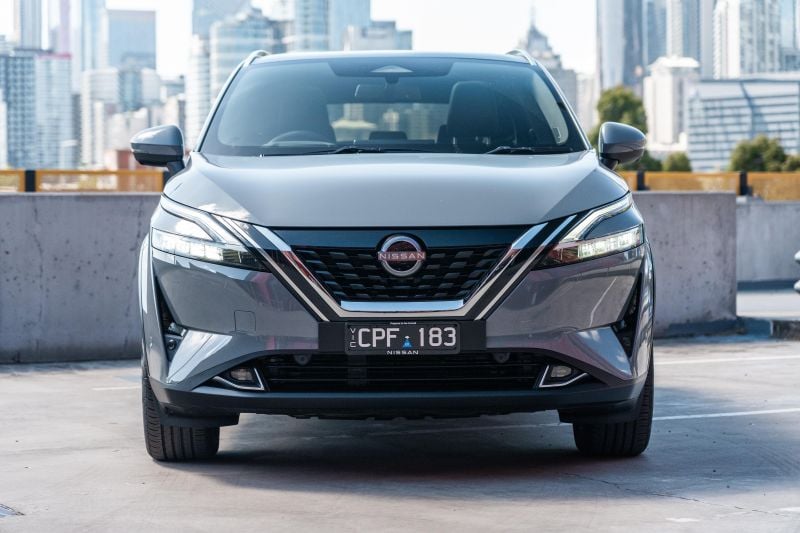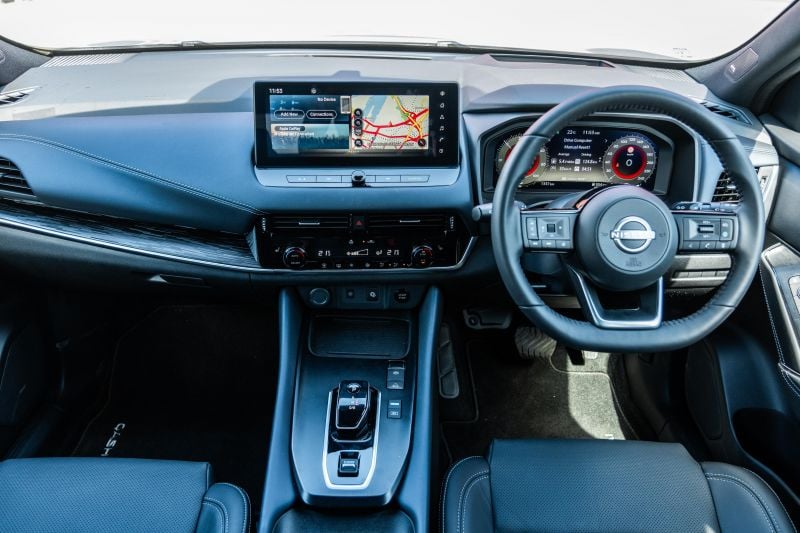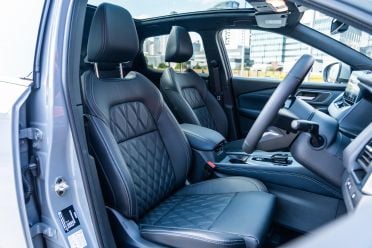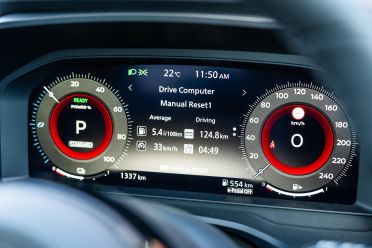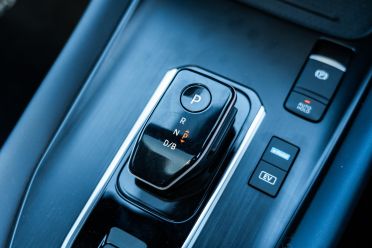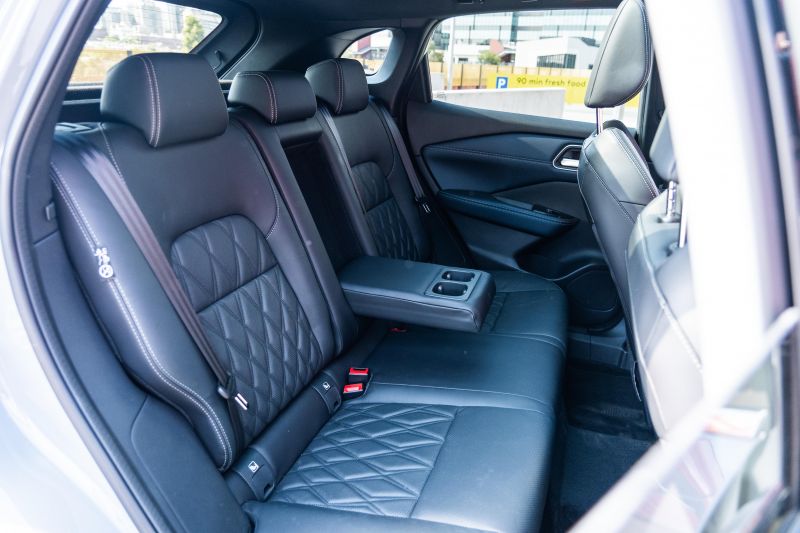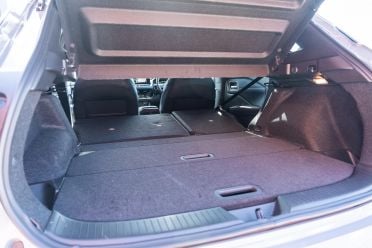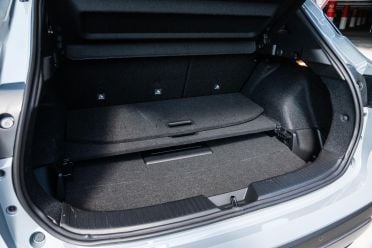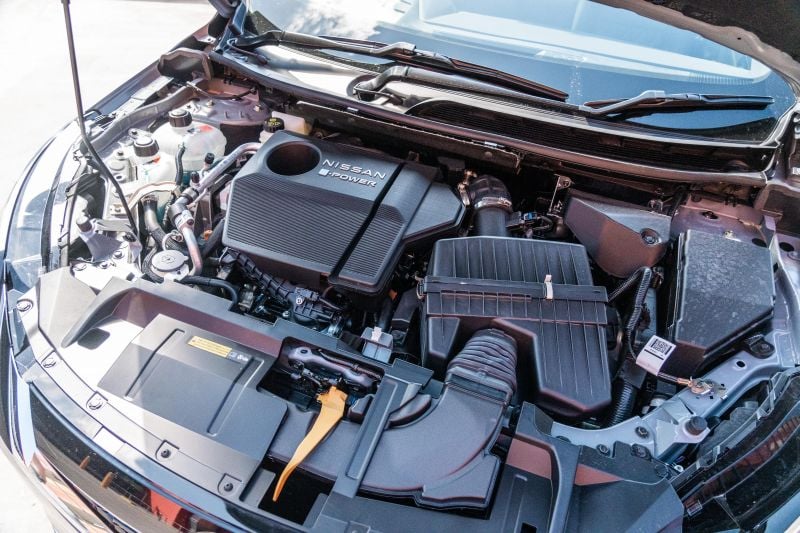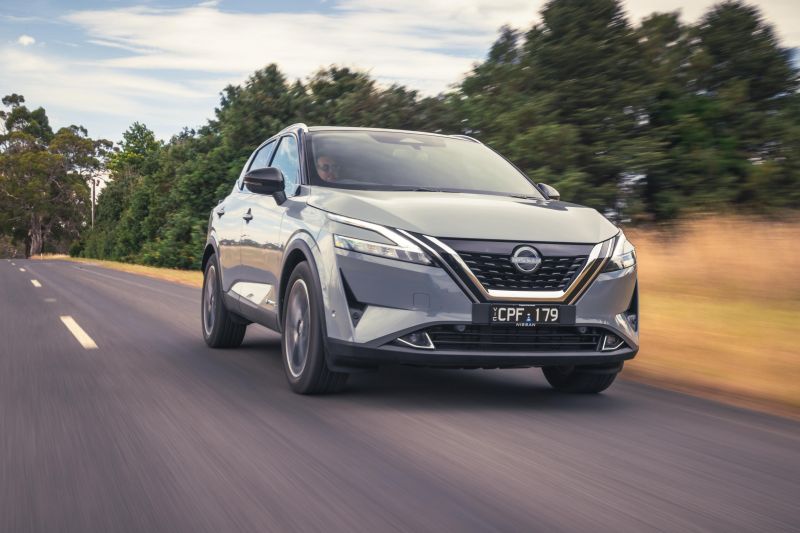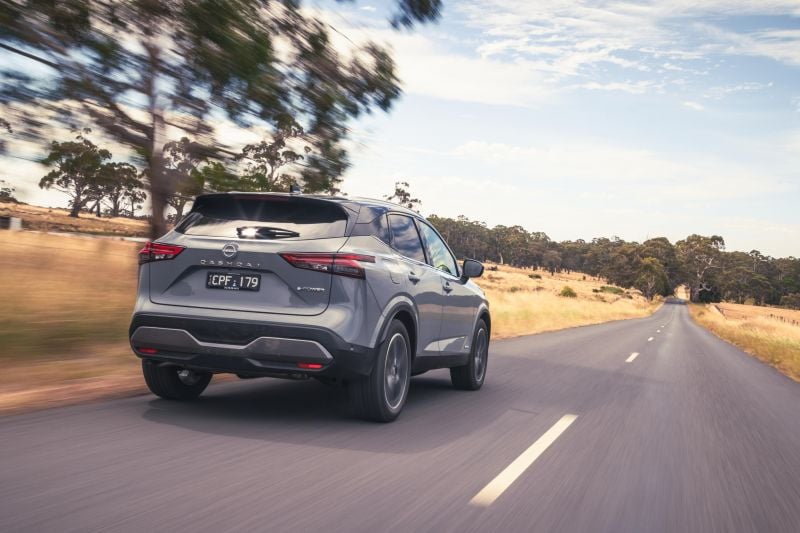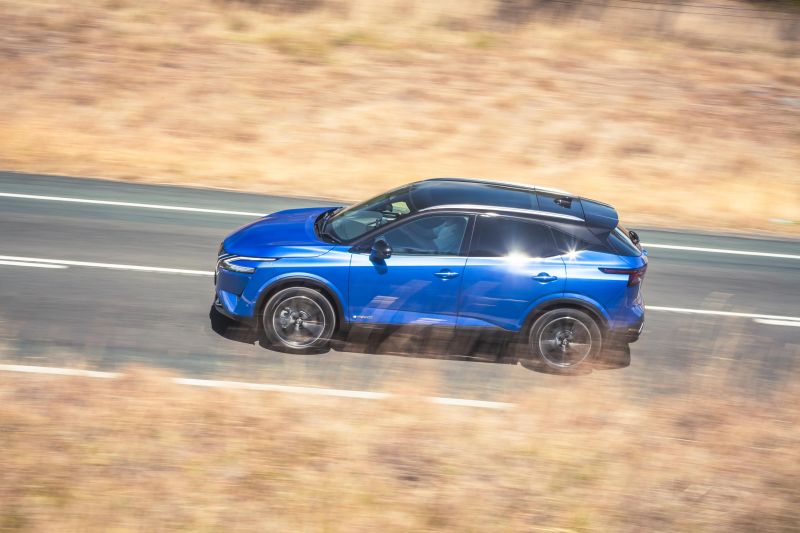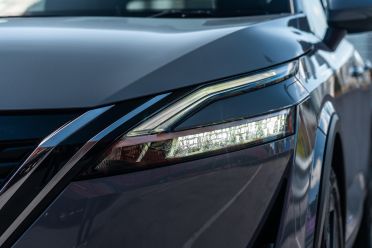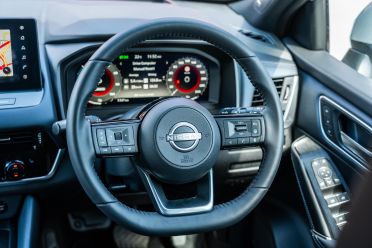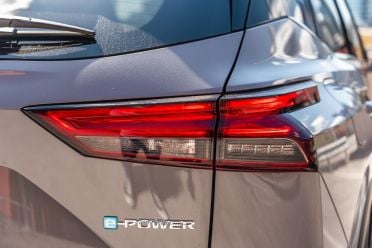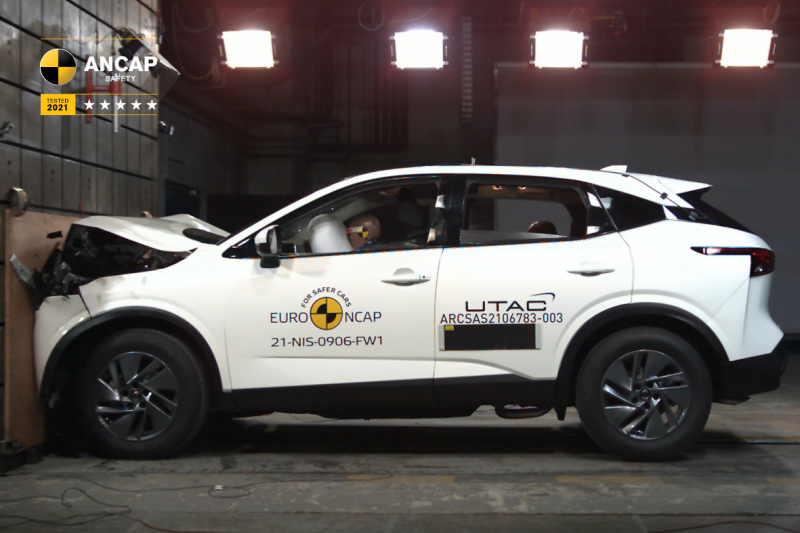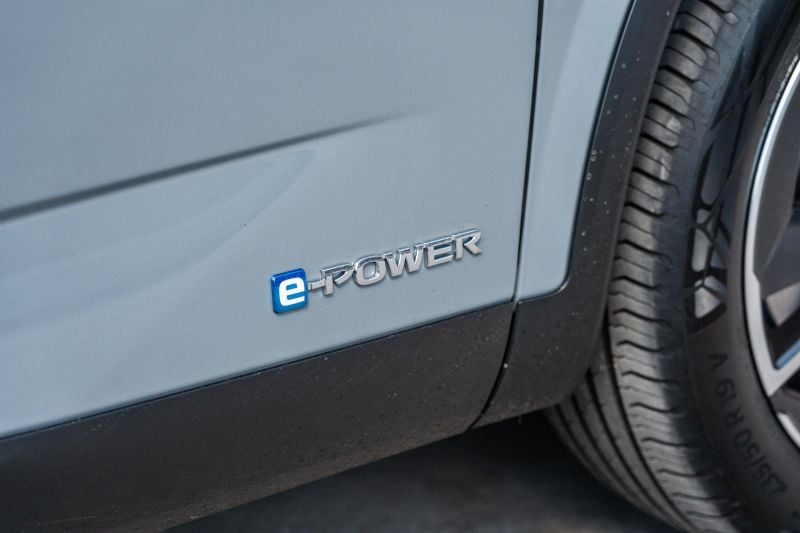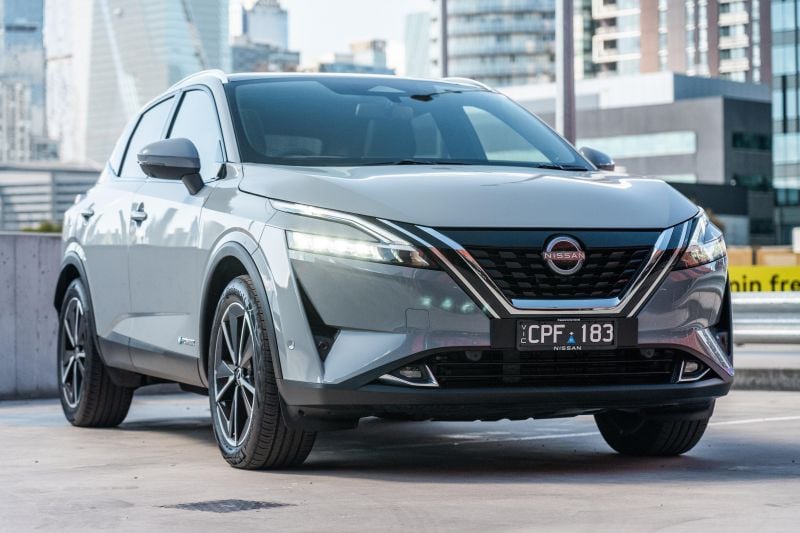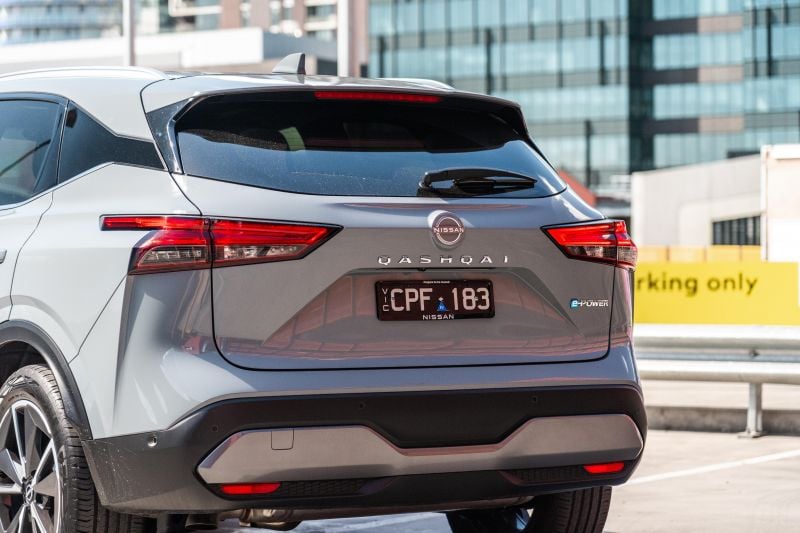Strong sales of electrified Toyotas has shown Australians want hybrid options, and Nissan is finally prepared to cash in.
Having introduced the bigger X-Trail e-Power in 2022, it’s added the smaller Qashqai to the range this year.
Size-wise, it’s a match for the Toyota Corolla Cross. But with only the flagship Ti trim on offer, it’s priced more closely in line with mid-range versions of the bigger (and wildly popular) Toyota RAV4.
As if a pair of Toyota crossovers wasn’t enough, the Qashqai now faces off with a hybrid Hyundai Kona, and will have hybrid versions of the larger Kia Sportage and Hyundai Tucson to deal with shortly.
How does the smallest Nissan hybrid stack up?

How much does the Nissan Qashqai cost?
The only Qashqai e-Power on offer in Australia is the range-topping Ti, with a sticker price north of $50,000.
2024 Nissan Qashqai pricing:
- 2024 Nissan Qashqai ST: $33,890
- 2024 Nissan Qashqai ST+: $37,890
- 2024 Nissan Qashqai ST-L: $42,190
- 2024 Nissan Qashqai Ti: $47,390
- 2024 Nissan Qashqai Ti e-Power: $51,590
Prices exclude on-road costs
To see how the Qashqai lines up against the competition, check out our comparison tool.
What is the Nissan Qashqai like on the inside?
Even lower-end versions of the Qashqai feel nice behind the wheel, but the Ti really is lovely.
From the waxy leather trim on the flat-bottom steering wheel to the quilted leather seats, there are lots of touches on hand here that make this feel like a pretty premium little SUV.
Along with heated seats, you get a heated steering wheel for chilly Melbourne mornings. It’s meaningfully more special than a Corolla Cross, and has a very different vibe to the more rugged RAV4.
Where it always felt like you were propped on top of the seats in the old Qashqai, the new ones offer support in all the right places. The view over the sculpted bonnet makes it feel like a proper SUV, rather than a high-riding hatchback as was previously the case.
The infotainment system is much better than the low-res, low-tech touchscreen that served in the last Qashqai. It now has wireless Apple CarPlay, reasonably attractive graphics, and sharp responses.
It’s very functional; although, it’s still not on a par with the uber-modern Hyundai Kona’s setup.
Likewise the digital dashboard, which offers a decent spread of information but still can’t match it with what you get in the latest Volkswagen Group products. The setup in related Renault products looks and feels more modern than this unit, which is shared with Mitsubishi.
There’s plenty of storage up front, with deep cupholders and a slot beneath the dashboard. You also get a decent bin under the central armrest, and spacious door pockets.
Access to the rear comes courtesy of doors that open to 90 degrees, which anyone loading a child will appreciate.
The wide opening makes it easier to get child seats in without painful contortion, and bigger adults are more easily able to clamber in if required.
Once in, there are above-average levels of leg room and head room. Also handy are the dual USB ports and air vents, along with the central fold-down armrest. It’s a very usable space, more in line with a Kia Seltos than the outgoing Kona.
We carried a carload of fully-grown adults without too much trouble, and you’ll be able to get kids in the back seat without many complaints. The middle seat is still for emergencies though.
ISOFIX points feature on the outboard rear seats, and there’s a trio of top-tether points for child seats.
Quoted boot space is 452 litres with the rear seats in place, expanding to 1376 litres with them folded.
Part of the extra volume is likely down to the Qashqai e-Power’s inclusion of a tyre mobility kit in place of the space saver spare fitted on petrol variants – something to consider if you venture out of town often.
What’s under the bonnet?
Prepare to get a bit nerdy, because this system is different to the hybrids Australians know.
Rather than directly driving the wheels through a conventional transmission or CVT, the petrol engine is mated to a motor-generator and an inverter.
That unit is used to charge the lithium-ion battery pack, which in turn feeds the drive motors. It’s not quite a range extender, given the car has an electric-only range so short it’s not even quoted by Nissan, but the engine also doesn’t directly drive the wheels.
The closest it comes is when you mat the throttle and it feeds the electric motors (via the attached generator and inverter) directly, rather than just suppling energy to supply the battery.
The end result is a car that should feel like a pure-electric vehicle (EV) to drive, complete with Nissan’s e-Pedal regenerative braking system, but one that offers similar range to a Toyota RAV4 Hybrid on the open road.
| Model | Nissan Qashqai e-Power |
|---|---|
| Engine | 1.5L 3cyl turbo-petrol |
| Power | 116kW |
| Torque | N/A |
| Electric motor | Single motor, front axle |
| Power | 140kW |
| Torque | 330Nm |
| Battery | 2.1kWh li-ion |
| Fuel consumption (claimed) | 5.2L/100km |
| Fuel consumption (as tested) | 5.4L/100km |
| Fuel tank capacity | 55 litres |
| Fuel rating | 95 RON |
How does the Nissan Qashqai drive?
There’s an adjustment process when you first get behind the wheel of an e-Power hybrid, but it doesn’t take long to learn how it works.
Like the bigger X-Trail, the Qashqai starts in electric vehicle mode and offers a few minutes of silent driving unless you really put your foot down. When it does fire up, the petrol engine settles into what feels like a pretty rough idle for a minute to charge the lithium-ion battery.
The odd part? There’s not necessarily a direct correlation between what your right foot is doing, and what the engine is doing. You might be crawling in city traffic, or slowing down, and the revs are doing something else entirely.
After its first startup the engine is generally refined, and once you’re dialled into how the system works it’s easy to ignore the disconnect between engine and road speed. The Qashqai felt even more refined than its bigger brother in my experience, with less vibration and noise in the cabin from the 1.5-litre engine.
The payoff is a driving experience that feels more electric than a Toyota, Hyundai, or Kia hybrid. Even without a rear motor (the X-Trail is all-wheel drive) it’s smooth and punchy off the line, and offers three levels of regenerative braking when you lift off the accelerator.
The standard setup is very light, the B option is a halfway house, and e-Pedal allows you to drive with mostly one pedal. Unlike in older iterations, the system cuts out at about 10km/h – so you don’t actually get one-pedal driving.
Nissan says it’s on the back of customer feedback, we say it’s missing the point of one-pedal driving.
At higher speeds you’ll notice the engine kicking in more regularly, but it never feels shouty like a Corolla Cross, or even a ZR-V e:HEV. Because it’s being used to charge the lithium-ion battery when you’re cruising on a constant throttle, the petrol engine in the e-Power generally hums away at lower revs in the background.
It excels on the open road, which isn’t something we’d generally say about conventional hybrids.
We praised the X-Trail for its impressive wind and road noise suppression at highway speeds, and Nissan’s suite of driver assists all work smoothly. The ProPilot system isn’t too hands on, instead only intervening when it’s actually required.
Ride quality is pretty good for a small SUV on big wheels, especially on the highway.
It still feels a little bit busy at lower speeds, more so than the larger X-Trail, but it’s no worse than its biggest rivals. We’ve praised the ST+ with its smaller wheels for its ride comfort, and the Ti on its 19-inch wheels isn’t quite as refined on pockmarked city streets.
Like the petrol model, the e-Power has light, easy steering that makes parking a breeze. Nissan’s cameras have improved significantly, so there’s now no excuse for dinged wheels or bumpers.
What do you get?
The Qashqai e-Power is only offered in range-topping Ti trim, which brings a generous list of standard inclusions.
Highlights include:
- e-Pedal Step (one-pedal mode)
- Regenerative braking
- Vehicle sound (pedestrians)
- Active Noise Cancellation
- Premium front grille
- e-Power badging
Qashqai Ti standard equipment:
- Remote, powered tailgate
- Panoramic glass sunroof
- Auto-dipping side mirrors
- 12.3-inch TFT digital instrument cluster
- 10.8-inch head-up display
- Intelligent key
- Driver memory for seat, mirrors, audio
- 10-speaker Bose sound system incl. subwoofer, digital amp
- 8-way power front passenger seat
- 4-way power lumbar for front seats
- Driver memory function
- Massaging front seats
- Quilted premium leather trim
- Black headliner
Is the Nissan Qashqai safe?
The Qashqai wears a five-star ANCAP safety rating, based on Euro NCAP tests conducted in 2021 – this rating applies to all variants in Australia and New Zealand.
Category scores included 91 per cent for adult occupant protection, 93 per cent for child occupant protection, 74 per cent for vulnerable road user protection, and an impressive 97 per cent for safety assist.
Standard safety features include:
- 7 airbags incl. front-centre
- Autonomous Emergency Braking (AEB)
- Pedestrian, Cyclist detection
- Junction assist
- Reverse AEB incl. Pedestrian detection
- Active speed limiter
- Adaptive cruise control
- Blind-spot monitoring
- Rear cross-traffic alert
- Forward collision warning
- Lane departure warning
- Lane keep assist
- Rear parking sensors
- Reversing camera
- Traffic sign recognition
- Tyre pressure monitoring
Qashqai ST+ adds:
- Intelligent Around View Monitor (360 camera)
- Moving Object Detection
Qashqai ST-L adds:
- Front parking sensors
- ProPILOT (lane centring)
- Alarm system
Qashqai Ti adds:
How much does the Nissan Qashqai cost to run?
The Qashqai is covered by Nissan Australia’s five-year, unlimited-kilometre warranty.
In addition to the warranty coverage, Nissan throws in a five-year, 24-hour roadside assistance program.
Scheduled maintenance is required every 12 months or 15,000 kilometres – whichever comes first. This is better than the X-Trail’s 10,000km intervals (countered by slightly cheaper services).
You can pay as you go, otherwise Nissan offers Pre-Paid Maintenance Plans covering three, four or five years – prices for the e-Power are $1152, $1650 and $2007 respectively, all of which are hundreds cheaper than the petrol, particularly over five years where the saving is closer to $900.
CarExpert’s Take on the Nissan Qashqai
I really like Nissan’s e-Power tech.
It’s not as efficient as a Toyota system, but its complicated combination of petrol and electric power delivers a more cohesive driving experience, more of the time.
Throw in the fact the Qashqai has an expensive-feeling interior and decent space inside, and it’s a pretty convincing alternative to the strong-selling Toyota Corolla Cross and RAV4.
It’s a shame Nissan isn’t bringing a cheaper version to Australia, though.
The Ti is lovely, but it’s more than $50,000 before on-road costs. A mid-range option for closer to $45k before on-roads would be arguably even more appealing, based on how much we’ve enjoyed our time in the Qashqai ST-L.
Click the images for the full gallery
MORE: Buy a Nissan Qashqai
MORE: Everything Nissan Qashqai











